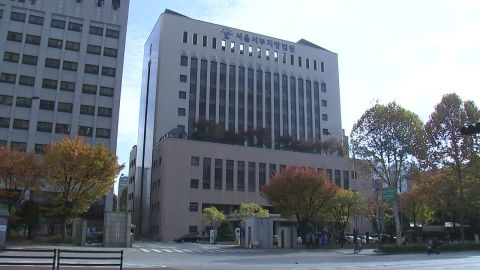A solar observation telescope developed by Korea, the U.S. National Aeronautics and Space Administration, and NASA has been launched.
The telescope will hang on to the International Space Station for up to two years to study the secrets of the solar corona.
I'm reporter Jang A-young.
[Reporter]
The 104th launch site of the SpaceX Falcon 9 rocket this year.
CODEX, a coronavirus graph jointly developed by South Korea and the United States, will fly into space on this rocket along with supplies to be delivered to the International Space Station.
Coronograph is a special telescope that observes the corona at the outermost of the sun's atmosphere, with two currently in operation.
Unlike conventional telescopes, the newly developed codex observes not only the shape of the corona but also the temperature and emission speed and implements it as a two-dimensional image.
The Korea Astronomy and Space Science Institute made polarization cameras and software, and the U.S. space agency took charge of the sun tracking device.
The mission is to find out why the corona, which is a million times darker than the surface of the sun, is a million degrees hotter.
[Cho Kyung-seok / Senior Researcher at the Korea Astronomy and Space Science Institute] There are two fundamental questions, one is why the COVID-19 is so hot and the other is why the solar wind is so accelerating.]
Codex's home for up to two years is the outer wall of the International Space Station (ISS), which is 400 kilometers above the ground.
The robot arm will come out to get a codex.
[Jeffrey Newmark / Director of National Aeronautics and Space Administration (NASA) Research: The Codex will be on board the International Space Station (ISS). Since we are looking at the sun from outside the space station, it is the best place for sun observation.]
The International Space Station orbits Earth every 90 minutes, of which Codex can observe the sun for 55 minutes, more than half.
This joint study is the first achievement in 11 years since Korea and the United States first began discussing cooperation in 2013.
In the meantime, it has undergone several experiments, such as observing a total solar eclipse on the ground or raising a camera at an altitude of 40km with a large balloon.
I'm YTN's Jang Ayoung.
※ 'Your report becomes news'
[Kakao Talk] YTN Search and Add Channel
[Phone] 02-398-8585
[Mail] social@ytn.co.kr
[Copyright holder (c) YTN Unauthorized reproduction, redistribution and use of AI data prohibited]
Science
More- Make eco-friendly aviation oil from discarded and inedible plant ingredients
- "Korea should clarify where nuclear power plants are responsible"...IAEA recommendations
- "Korea should clarify where nuclear power plants are responsible"...IAEA recommendations
- "Hehehehehehehehehehehehehehecheesecheesecheesecheesecheesecheesecheesecheekcheekcheekcheekcheekcheekcheekcheekche


![[Reporting Y] "Light" is right in front of the exam.a massive cancellation of qualifications](https://image.ytn.co.kr/general/jpg/2024/1123/202411230506345528_h.jpg)

![[Yetterview] "University War Season 2" The True Taste of Brain Survival Overcrowding Controversy](https://image.ytn.co.kr/general/jpg/2024/1123/202411230900011387_h.jpg)
![[YTERVIEW] "The best song is 'Dreams of Octopus'". Thank you, children".](https://image.ytn.co.kr/general/jpg/2024/1123/202411230800271881_h.jpg)



